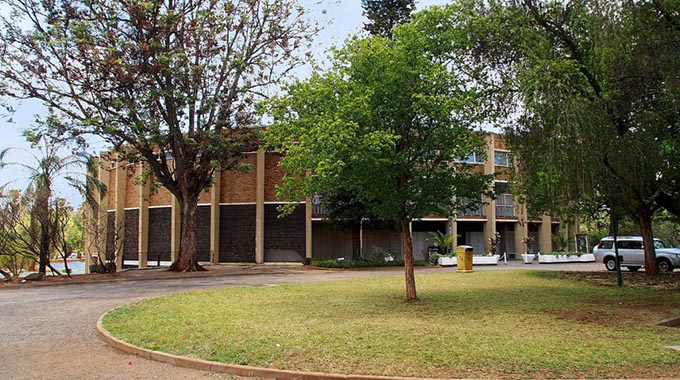
The Sunday News

Phineas Chauke, Business Correspondent
SITUATED in the Centenary Park, about 300 metres from the CBD, the Natural History Museum is one of Bulawayo’s prime attractions.
It is ideal for a peaceful excursion and is indeed an open university for students and researchers. The museum offers its visitor a unique opportunity to discover Zimbabwe’s past and present and also to experience it’s amazing diversity of natural and cultural heritage all under one roof.
The museum was the first in the entire federation of Southern Rhodesia, Northern Rhodesia and Nyasaland.
To date it remains the largest in the whole of Sub-Saharan Africa. It houses the second largest ever mounted elephant in the whole world, with the largest housed in the Smithsonian Museum of Natural History in the United States of America.
Some of its collections are the largest in the whole world and it is one of the few museums in the world with an original specimen of the oldest existing fish species, the pre-historic Coelacanth on display.
The museum was established in 1901 and due to the rapid expansion of its collections it moved places four times to end up at its current location.
Unlike the previous places, the current building was custom-built following a donation of land by the city council.
Construction started in 1961 and the museum was officially opened in 1964 by the Governor of Southern Rhodesia, Sir Humphrey Gibbs.
The ground floor galleries showcase a wide array of flora and fauna ranging from large to small mammals, reptiles, fish, amphibians and is a birder’s delight with a diverse representation of birdlife. The flora species which characterise the natural habitats of the displayed animal species are also represented to give a life-like impression. Comprehensive notes on habits and distribution of the species are part of the displays.
The geology section is highly enlightening and it climaxes with an exhilarating experience in the replica mine tunnel.
The palaeontology section says it all about fossils and includes an impression of the Cilophysis rhodesiensis, a dinosaur believed to have lived in this country.
On the uppermost floor, the visitor is taken back in time to the early development of man and enjoys the slow journey to the present in the Hall of Man.
The displays feature early farming, hunting, art, medicine, mining and warfare.
The Hall of Chiefs gets to a grand opening with the Zeederberg Royal Mail Coach, which was used for transport mail and parcels between Bulawayo and Mafikeng and the gun carriage which conveyed Cecil John Rhodes’ body from Bulawayo to its burial place at the “View of Word” in the Matobo Hills. The visitor is then treated to the history of pre-colonial, colonial and post-colonial history of Zimbabwe.
This includes the history of Great Zimbawe from which the country derives its name, the foundation and development of the Ndebele nation, as well as a low down on the life of Rhodes, the man famed for colonising Zimbabwe, Zambia and Malawi through his British South Africa Company.
A section of the Hall of Kings gallery is befittingly dedicated to the history of Bulawayo the City of Kings.
The Invertebrates gallery also on the top floor is a marvel providing the visitor with a window into the incredibly divergent and intriguing secret lives of invertebrate fauna from the pests to the beneficial.
The central courtyard on the ground floor has a live snake display that has become a favourite spot with the visiting public with its wide representation of serpentine species in glass cages.
The museum has eight research departments that are manned by trained and experienced experts in disciplines ranging from archaeology, entomology, mammalogy, herpetology, ornithology, ichthyology, arachnology to geology and palaeontology.
Right in front of the museum there is an impressive steam engine built in 1910, which was used to run sawmills in Tsholotsho back in the years.
Another unmistaken feature in the museum grounds is the printing press that used to belong to Bulawayo’s first and one the country’s oldest surviving newspapers, The Chronicle.
Behind the museum stands the statue of Cecil John Rhodes that used to be where the statue of former Vice-President Joshua Nkomo stands, and also the statue of Sir Charles Patrick John Coghlan who became Southern Rhodesia’s first Prime Minister in 1923.
The Natural History Museum which is open from 8am to 5pm every day of the year including public holidays is not only a tourist attraction but also a critical resource centre producing and disseminating crucial information to communities and school children. It houses a fully serviced Education Centre for children to research and also receive lectures on natural and cultural heritage. Various themed lunchtime and evening talks are held in the museum auditorium for community members free of charge.
Refreshments are also available for sale in the museum cafeteria on the lower ground floor while souvenirs and publications are sold in the museum curio shop just by the reception. The museum is the perfect place to just get inspiration, learn, grab a cup of coffee or propose to your lover.
– Chauke is a Tourism Consultant, Marketer and Tour-Guide contactable on email: [email protected] and mobile number +263776058523



